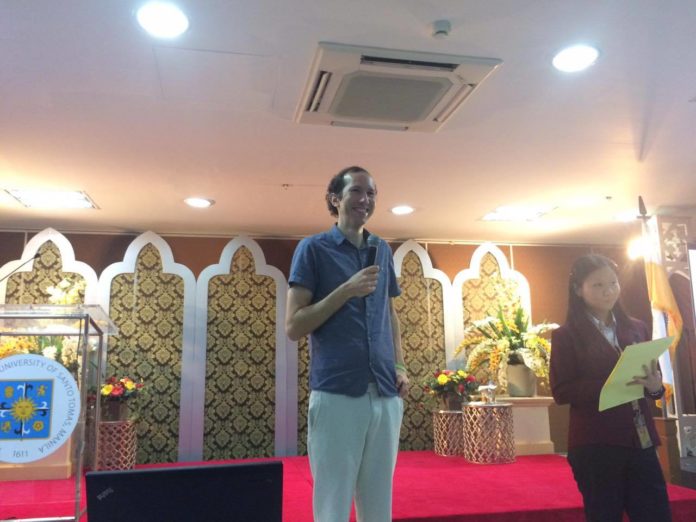Nov. 23 2016, 11:58 p.m. – CLIMATE-responsive designs are the target of the latest innovations in architecture, an international architectural consultant told students in a lecture last Nov. 23 at the Buenaventura G. Paredes, O.P Building.
Nadir Abdessemed, a Harvard Graduate School of Design guest lecturer, discussed the importance of climate and location in designing sustainable architecture in “Climate Responsive Design, Comfort and Energy in Architecture,” a workshop organized by Goethe-Institut Philippinen, the German cultural office.
“Climate-responsive design has a lot of potential as it helps in influencing one’s attitude towards taking care of the environment while maintaining the stability of architectural structures,” Abdessemed said. “From a global perspective, architects have a tremendous responsibility in shaping the environment and determine how we are living.”
Abdessemed introduced “high comfort, low impact,” an infrastructure concept that gives high consideration to the comfort of inhabitants and energy efficiency.
“The key point in making sustainable infrastructure is to apply vernacular architecture, an architectural style that depends on the availability of construction materials within the location and tradition of local builders,” he said.
Abdessemed described sustainable architecture as a way of thinking, rather than a profession. “Sustainable thinking can be incorporated in any kind of profession, whether it’s in design, architecture or finance,” he said.
Abdessemed is the project leader of the German office of Transsolar Stuttgart, an international climate engineering firm that aims to build indoor and outdoor spaces with a positive environmental impact.
The architecture workshop was co-organized by the University of Santo Tomas and UP Diliman College of Architecture. Chelsey Mei Nadine B. Brazal












